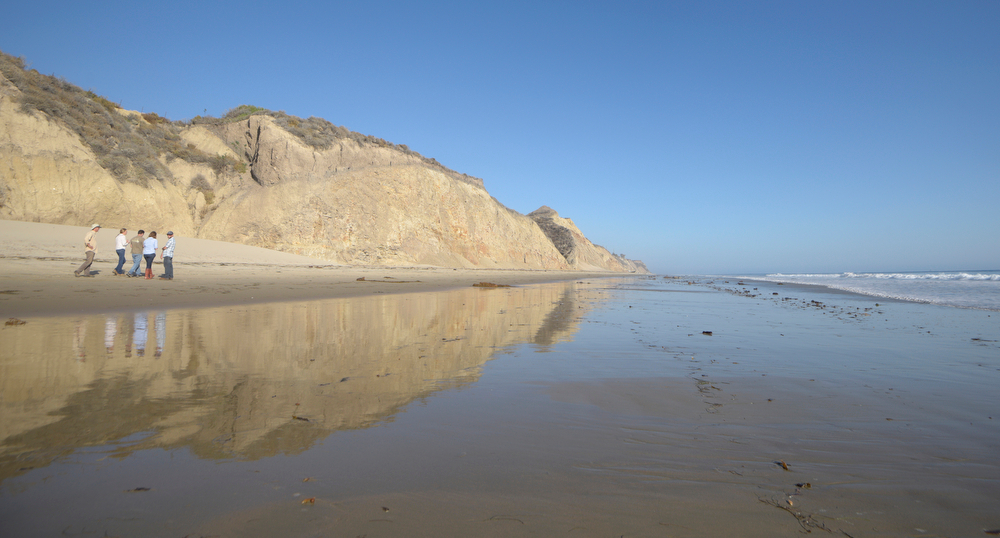Hollister Ranch Beach Access Surveys Underway
Cultural Resource Survey and Environmental Report to Address Coastal Commissioners’ Questions and Concerns

A program to provide access to Hollister Ranch’s eight miles of public beaches in Santa Barbara County is still crawling along, with the only progress after four years being the beginnings of a cultural resources survey and a programmatic environmental impact report.
The environmental report is tasked with looking at the potential impacts of the slew of experiences for beachgoers envisioned in the draft Hollister Ranch Coastal Access Program: relaxing, walking, playing and swimming in the ocean, surfing, coastal hiking or biking, educational opportunities, and more.
To answer the contentious question of how the public would reach the remote beaches daily, various modes of both guided and independent access for transportation are being considered, including by shuttle, car, foot, and bicycle. State Lands, Parks, Coastal Commission, and Coastal Conservancy make up a state team that is in the midst of hiring a consultant.
The need for a Cultural and Tribal Resource Assessment speaks to the remoteness of the area, which is a 14,000-acre residential subdivision in Santa Barbara County with a number of Chumash sites. The state hired Applied Earthworks to conduct the assessment with the help of tribal members and the Chumash Tribal Working Group.
Linda Locklin, the California Coastal Commission’s coastal access program manager, said the environmental impact report would help ensure that the program is more considerate and protective of the area’s resources and help it “make more sense in the whole scheme of things.”
“We’ve achieved some critical milestones, and we’re well on our way to get the environmental documents done,” Locklin said. “And that’s what we need to support the planning program that we’re going to be finalizing and bringing back to the Coastal Commission.”
The two surveys underway are in response to questions and concerns brought up by coastal commissioners last year pertaining to the privately owned ranch land’s residents, terrain, livestock, and other unique characteristics. The roughly 1,200 residents and lot owners at Hollister Ranch have expressed numerous concerns about the potentially adverse consequences of development and increased human presence on the ranch’s Chumash sites, sensitive plant and animal communities, and overall appeal.
Access to Hollister Ranch is currently either by walking along the beach or boating into the highly sought-after surf, teeming tide pools, sandy beaches set against rocky cliffs, and landscape of rolling green hillsides.
“We were never able to make any headway with the ranch owners to get in there,” Locklin said. “They have successfully kept the state from fulfilling the requirement of the Coastal Act,” which is meant to protect public access and recreation along the coast.
The ranch owners have also made the point that the beaches are not completely inaccessible as is, and access is often granted to children, veterans, scientists and birdwatchers through their voluntary docent programs like the Tide Pool School. But state agency staff have argued that those voluntary programs are not the same as general public access.
In 2019, Senator Monique Limón authored Assembly Bill 1680, which required the state to prepare an updated public access program based on an agreement that dates back to 1982 and Limón’s initial 2018 bill, which then-governor Jerry Brown refused to sign.
The plan set by AB 1680 was to create public access to Hollister Ranch’s beaches by April 2022. But that date has come and gone, as the program has been the center of prolonged negotiation and discussion, and the focus of workshops, public outreach, and legal battles.
“Senator Limón was very clear,” Locklin said. “This has been a controversy in Santa Barbara County for 40 years. It’s time that it’s resolved.”



